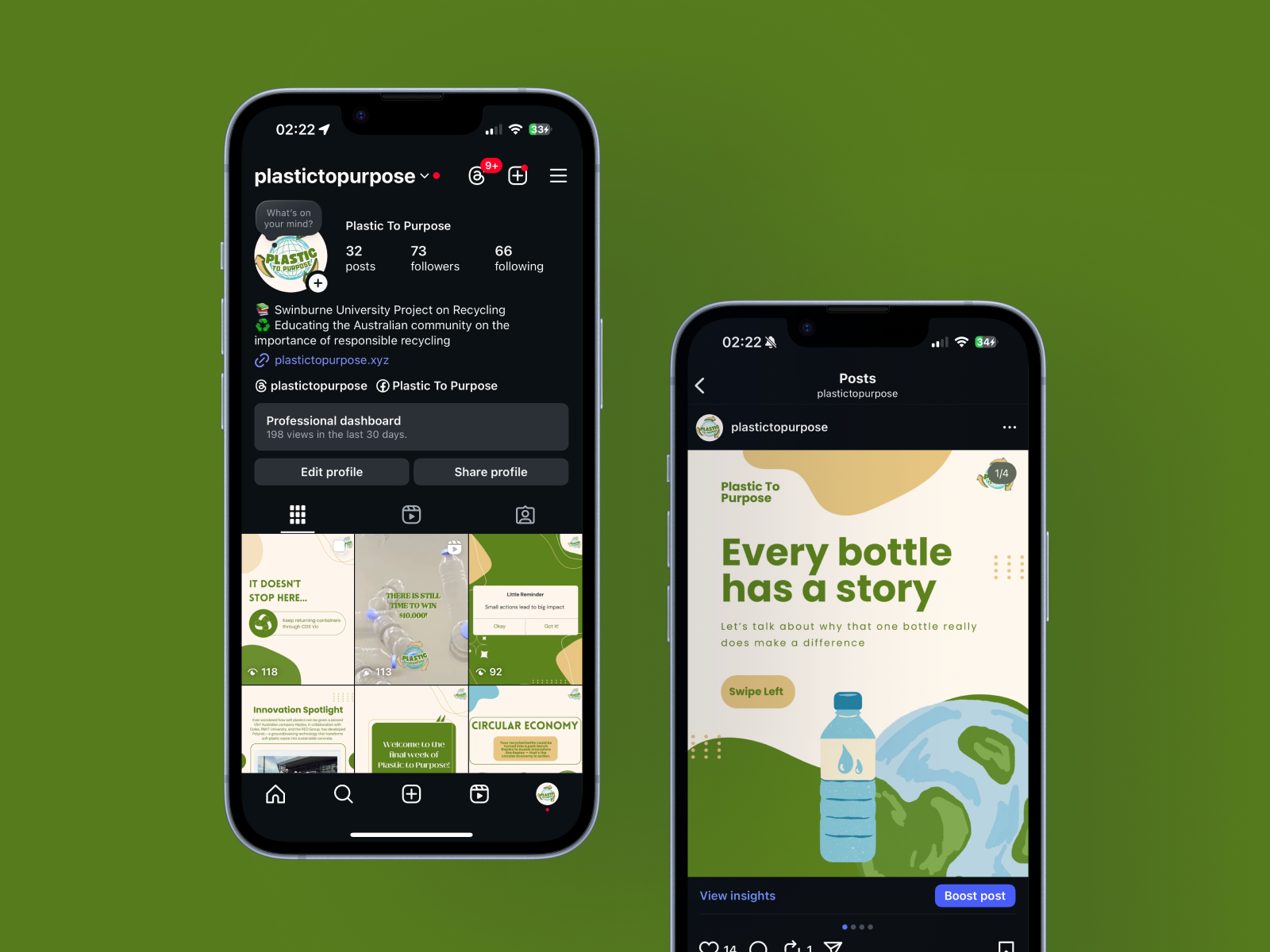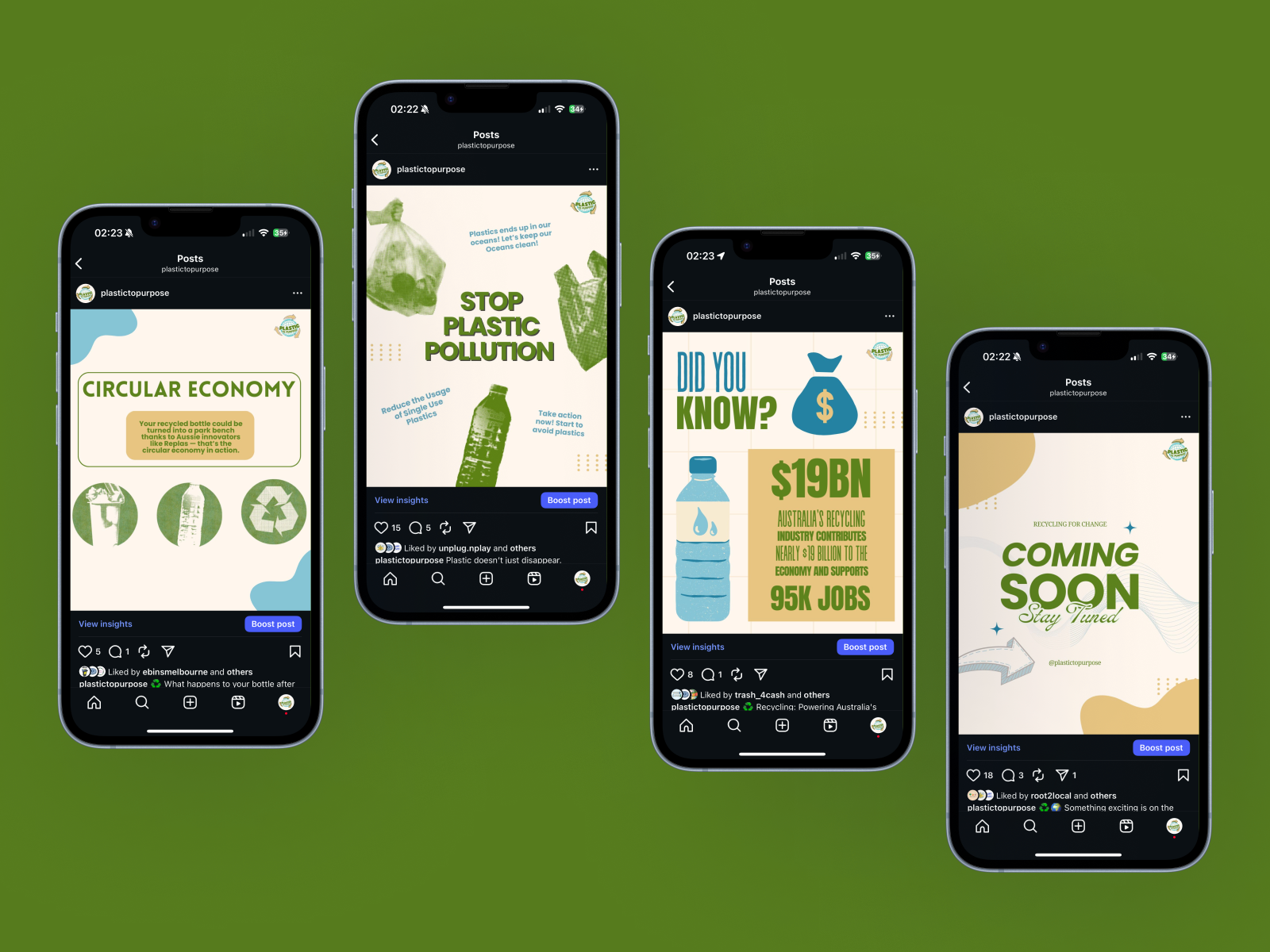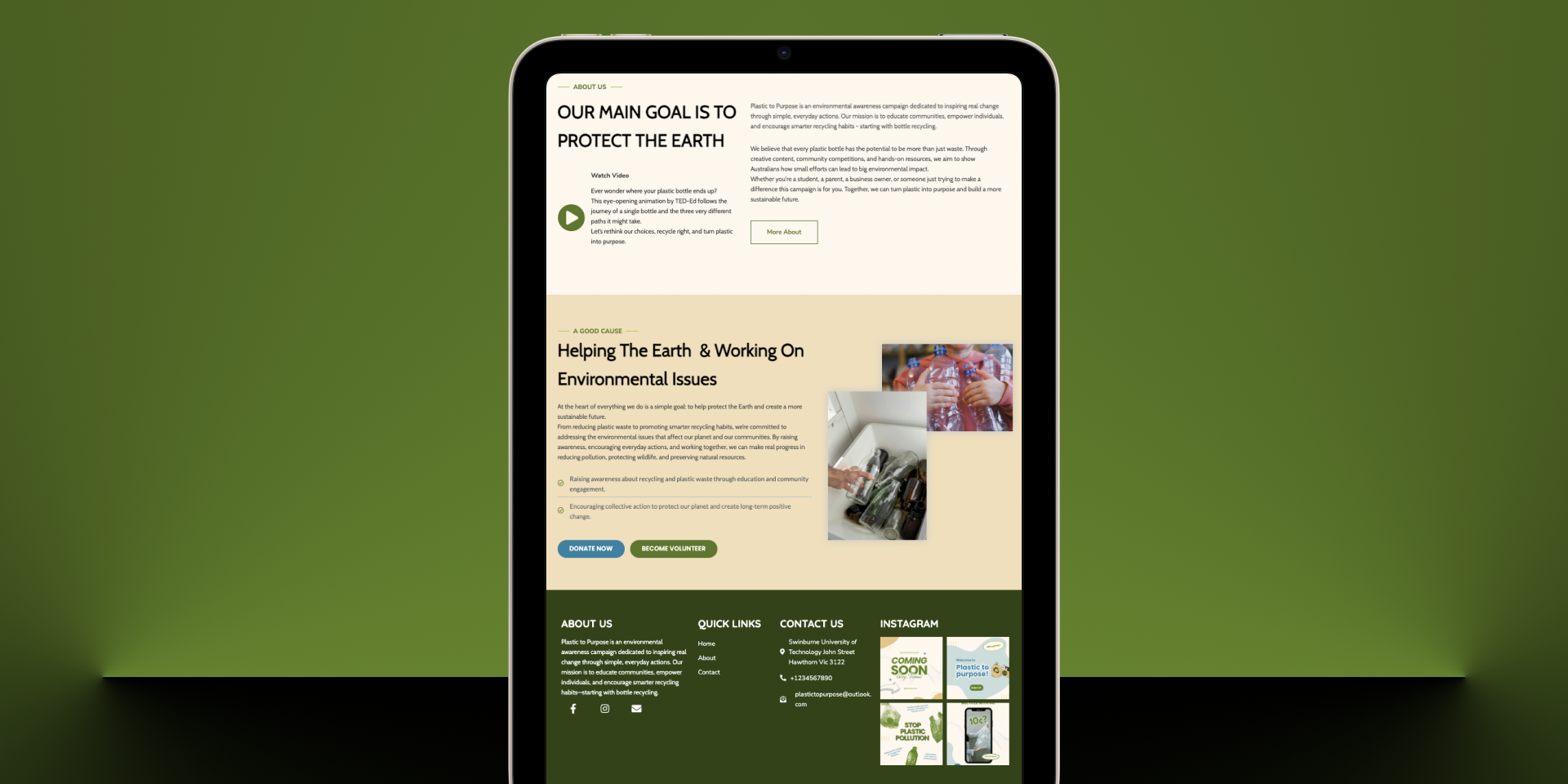
Overview
Plastic to Purpose is a cross-channel online marketing campaign designed to raise awareness about plastic waste and promote practical, creative ways to repurpose and reduce it in everyday life. Centred on the theme of sustainability and human wellbeing, the campaign encourages small but meaningful lifestyle changes that benefit individuals, families, and the broader Australian community.
Project Aim
The campaign aimed to educate the Australian community about responsible recycling, with a focus on bottle recycling, while inspiring individuals to adopt long-term sustainable habits. Through competitions, challenges, and educational content, Plastic to Purpose sought to make sustainability approachable and actionable, fostering community participation and collaboration toward a cleaner environment.


Key Objectives
Develop a cross-channel strategy integrating website, social media, and email marketing.
Encourage community engagement through interactive posts, weekly challenges, and polls.
Educate users on recycling processes and how small actions can lead to meaningful environmental impact.
Meet SMART goals for reach and engagement across WordPress, Instagram, Facebook, Threads, and Mailchimp.
Campaign Strategy
The campaign ran for six weeks, with weekly themes including:
Why Recycling Matters
How to Recycle Right
Community & Business Involvement
The Recycling Challenge
What Happens After You Recycle
The Future of Recycling
Each week introduced new content across all platforms, reinforced by EDM newsletters and a WordPress blog. The website acted as the campaign hub, linking all channels and providing users with educational content and updates.
SMART Goals
WordPress Website
Goal: 40 visitors, 15% average engagement, bounce rate under 50%
Result: 28 visitors, 57% engagement rate (exceeded target)
Mailchimp Email Newsletter
Goal: 5 new subscribers through consistent promotion
Result: 6 subscribers, strong open rates, steady engagement
Instagram
Goal: 40 followers; minimum 9 posts and 2 stories per week
Result: 55 followers, over 1,500 total views across posts and reels (exceeded target)
Facebook
Goal: 30 followers
Result: 14 followers, indicating a need for stronger promotion on this platform
Threads
Goal: 40 followers
Result: 11 followers, slower growth due to a smaller platform user base
Overall, while not all numerical targets were reached, the campaign successfully built meaningful engagement and demonstrated the effectiveness of consistent, value-driven messaging.
Design Decisions
Plastic to Purpose featured a calming visual identity using natural hues of green, beige, and blue to reflect sustainability and wellbeing. This colour palette maintained cohesion across all platforms and strengthened brand recognition.
Consistent layouts, infographics, and short-form content ensured readability and accessibility, particularly for mobile users. Typography and contrast were carefully chosen for clarity, especially in outdoor or mobile viewing conditions.
Usability & Accessibility
Usability decisions centred on clarity, readability, and inclusivity. Posts used minimal text per slide and high-contrast backgrounds to ensure legibility. Future iterations would expand accessibility features such as alt-text descriptions, audio-friendly formats, and mobile-optimised navigation.
Experimental Insights
Weekly platform experiments tested and refined content performance.
Examples included:
Adding interactive story stickers and polls on Instagram.
A/B testing homepage layouts using Nelio A/B Testing on WordPress.
Adjusting Mailchimp send times and subject lines for higher engagement.
Launching recycling challenges and fact-based polls on Facebook.
These experiments provided valuable data for improving engagement and content timing, even when some tests produced inconclusive results due to limited traffic.
Performance Highlights
Instagram performed strongest, with 1,552 views and 55 followers, driven by consistent reels, carousels, and infographics.
WordPress achieved a 57% engagement rate and bounce rate under 50%, indicating meaningful site interaction.
Mailchimp exceeded its goal with 6 subscribers and a strong 58% open rate and 4.2% CTR.
Threads showed early engagement growth through short, discussion-driven posts.
Reflection
Plastic to Purpose demonstrated how thoughtful design and multi-platform storytelling can drive meaningful engagement around sustainability. While the campaign’s audience size was modest, the quality of engagement was strong, proving that authentic, educational content fosters community connection.
This project strengthened my understanding of cross-channel marketing, data-driven decision-making, and iterative testing. It reinforced the importance of consistency, accessibility, and emotional connection in digital campaigns addressing social issues.
Key Takeaways
Consistency across channels builds brand trust and recognition.
Small-scale engagement can be more impactful than high reach when content is meaningful.
Iterative testing leads to stronger, audience-informed strategies.
Sustainability messaging works best when paired with creativity, optimism, and actionable steps

